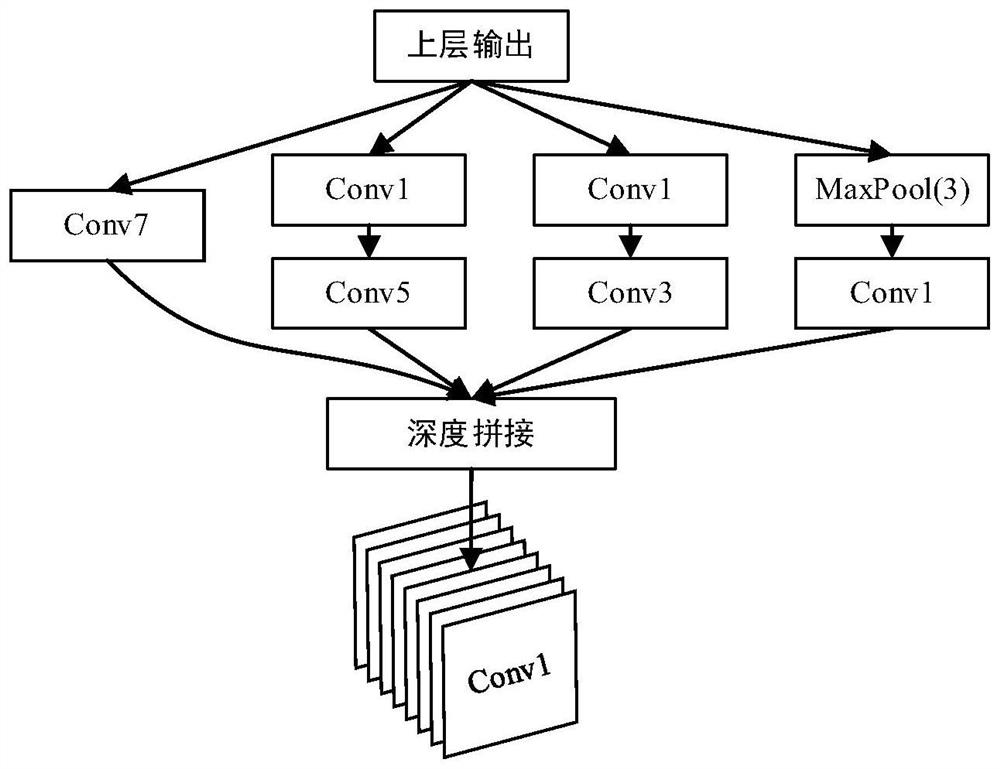Radar target recognition algorithm based on novel MDR-Net
A radar target and recognition algorithm technology, applied in scene recognition, character and pattern recognition, calculation, etc., can solve problems such as low parameter amount and difficult feature extraction
- Summary
- Abstract
- Description
- Claims
- Application Information
AI Technical Summary
Problems solved by technology
Method used
Image
Examples
Embodiment Construction
[0024] The present invention will be described in further detail below with reference to the accompanying drawings.
[0025] figure 1 is the "Conv" module, which is a composite function that includes a convolutional layer, a batch normalization layer, and an activation function layer.
[0026] figure 2 For the HMDS module, it contains a parallel convolution structure and a point convolution layer. Convolution kernels of different sizes are introduced in the parallel convolution layer to improve the ability of the network to extract sparse features in radar signals, broaden the network structure, and further increase the depth and width of the network model. Among them, "Conv7", "Conv5", "Conv3", and "Conv1" represent the convolutional layers of 7×7, 5×5, 3×3 and 1×1 respectively, and “MaxPool(3)” means that the step size is 1 The 3×3 pooling. In the parallel convolution structure, "Conv7" directly reads the data of the input feature map without compressing the depth throu...
PUM
 Login to View More
Login to View More Abstract
Description
Claims
Application Information
 Login to View More
Login to View More - R&D
- Intellectual Property
- Life Sciences
- Materials
- Tech Scout
- Unparalleled Data Quality
- Higher Quality Content
- 60% Fewer Hallucinations
Browse by: Latest US Patents, China's latest patents, Technical Efficacy Thesaurus, Application Domain, Technology Topic, Popular Technical Reports.
© 2025 PatSnap. All rights reserved.Legal|Privacy policy|Modern Slavery Act Transparency Statement|Sitemap|About US| Contact US: help@patsnap.com



